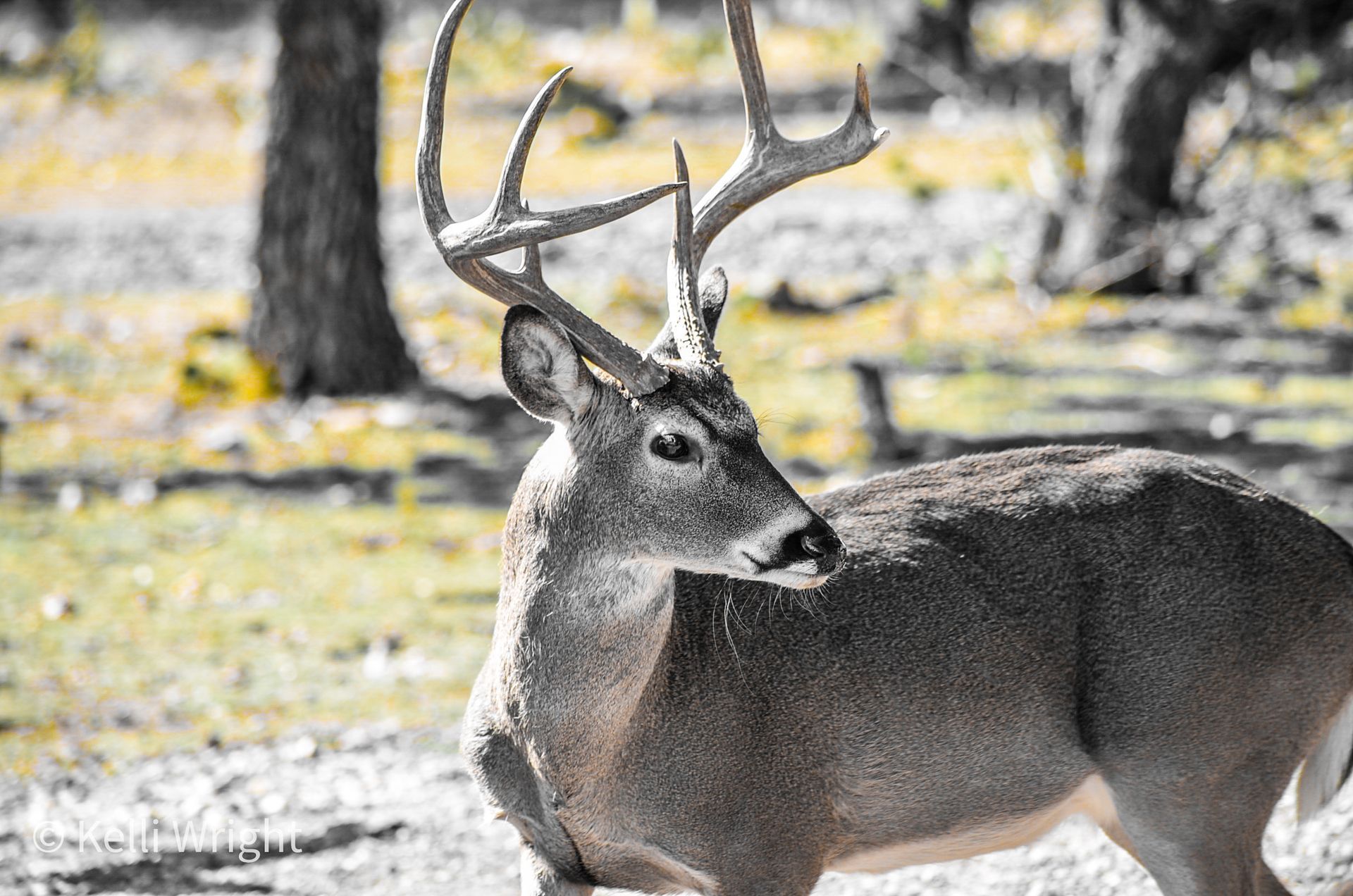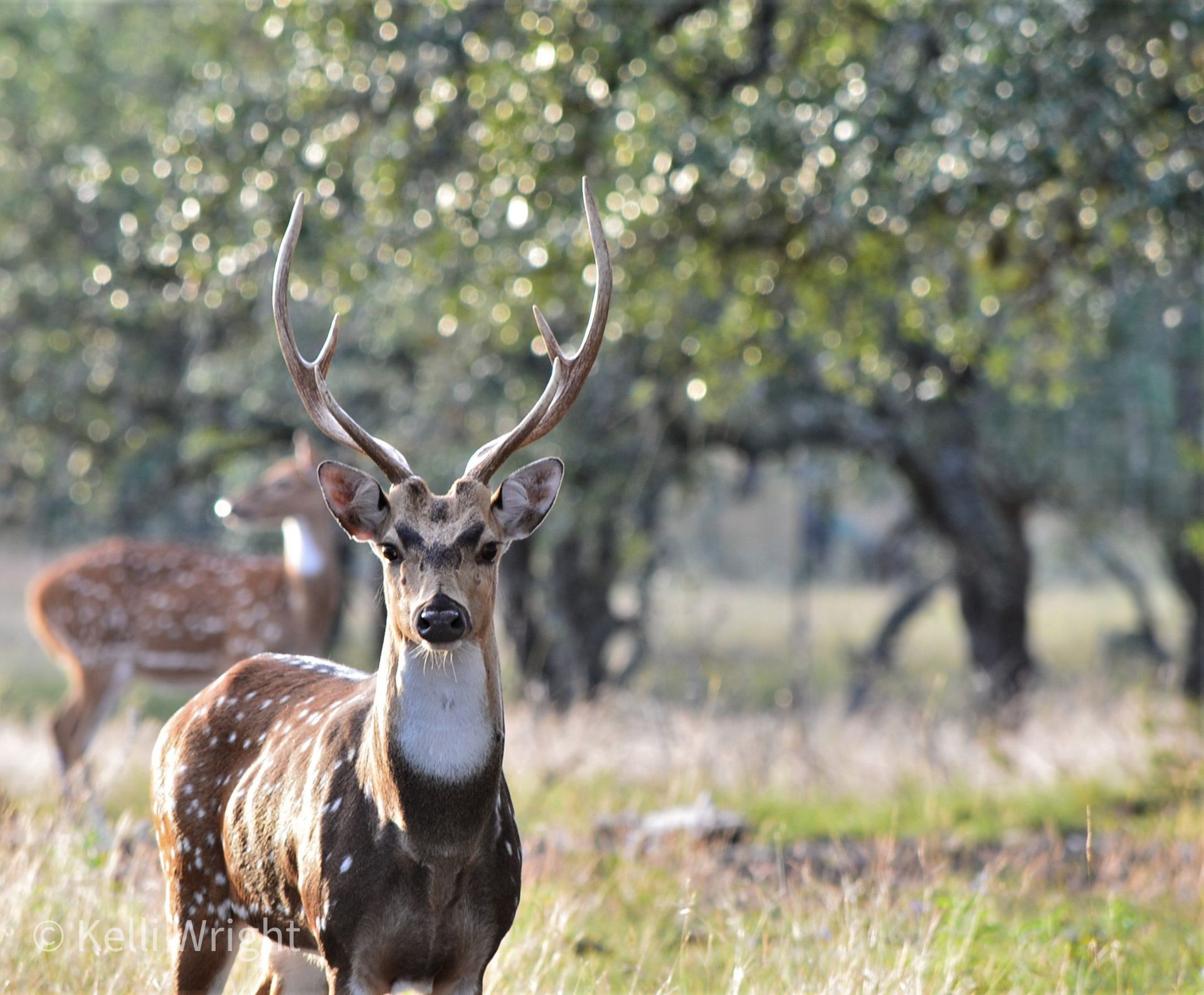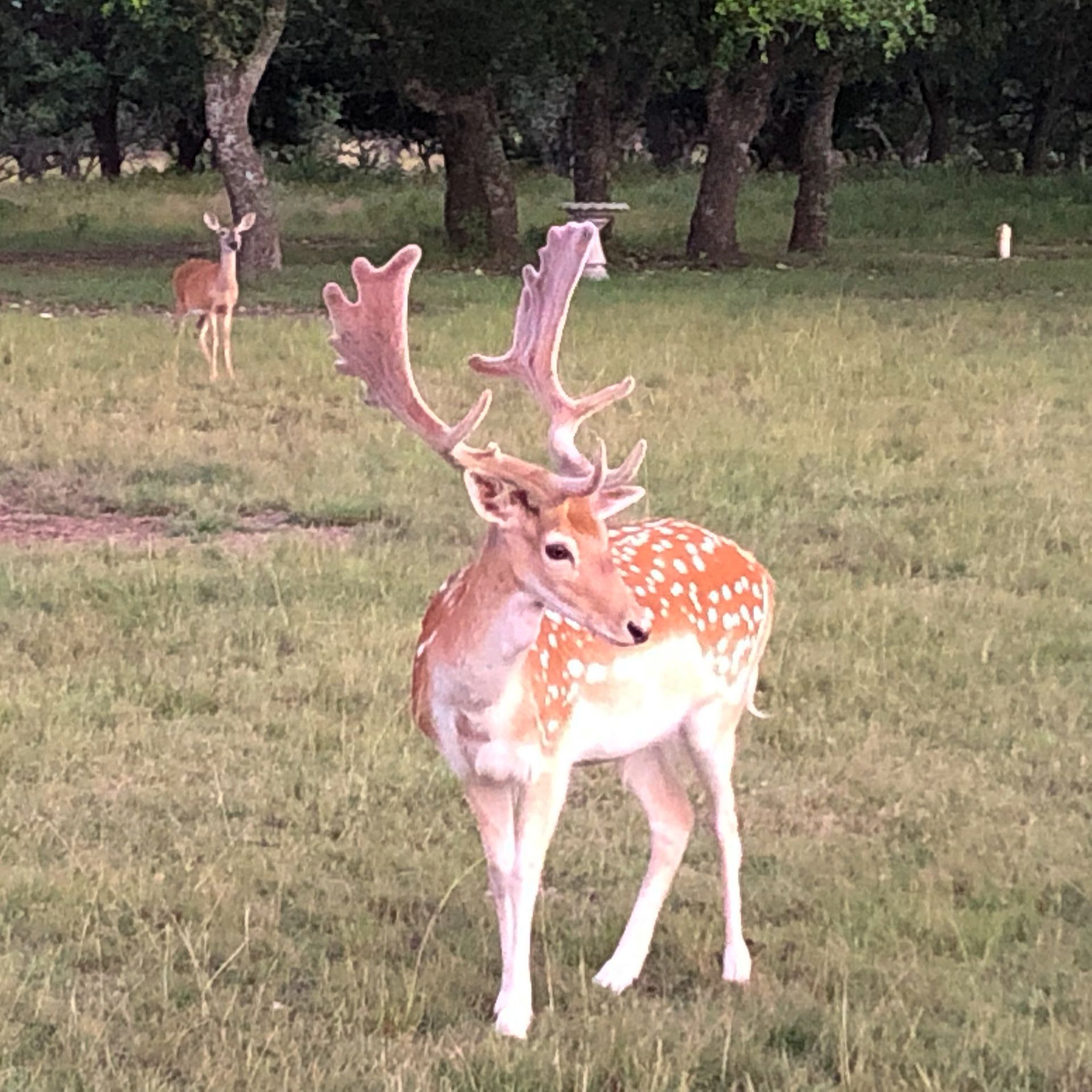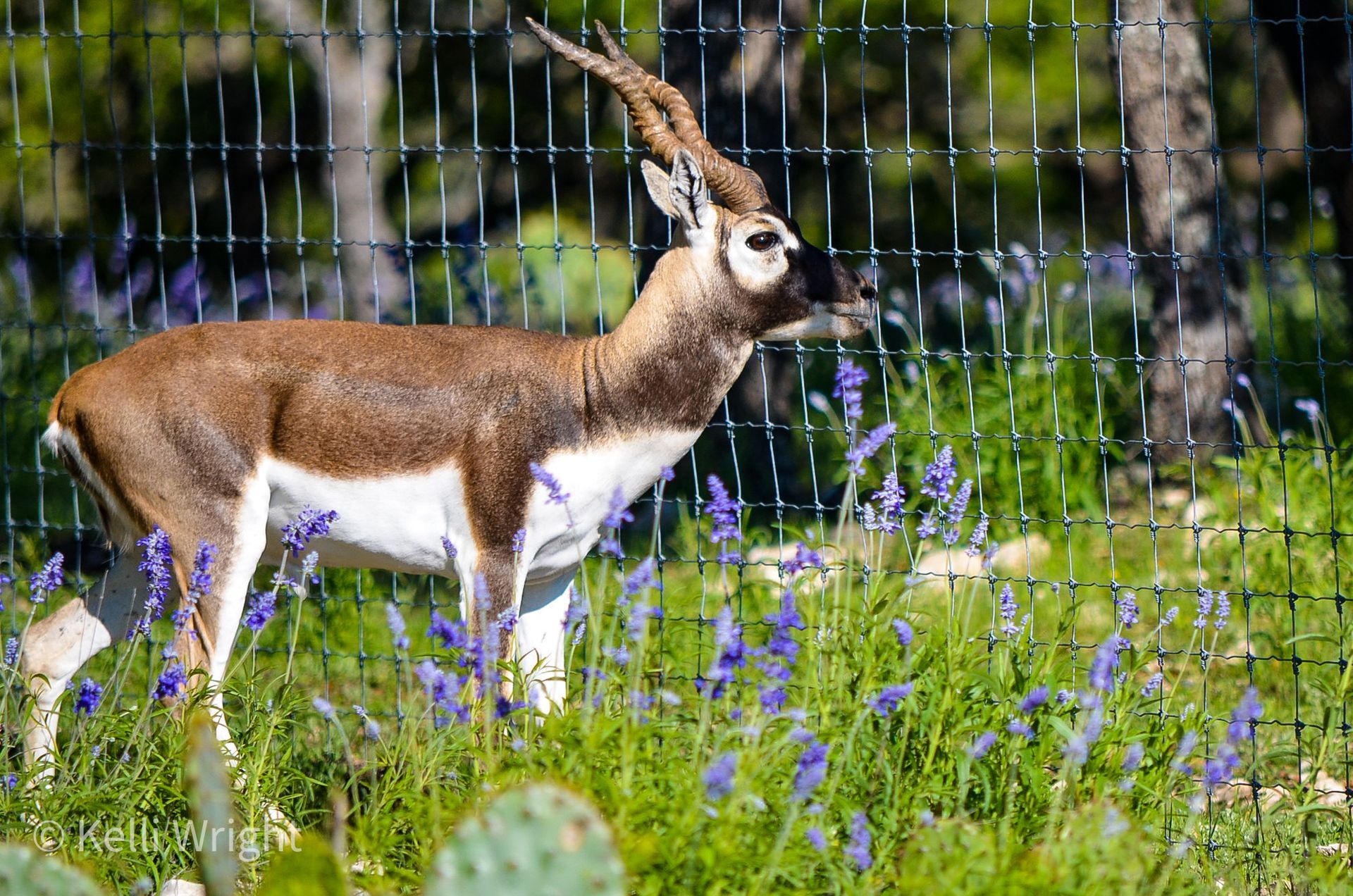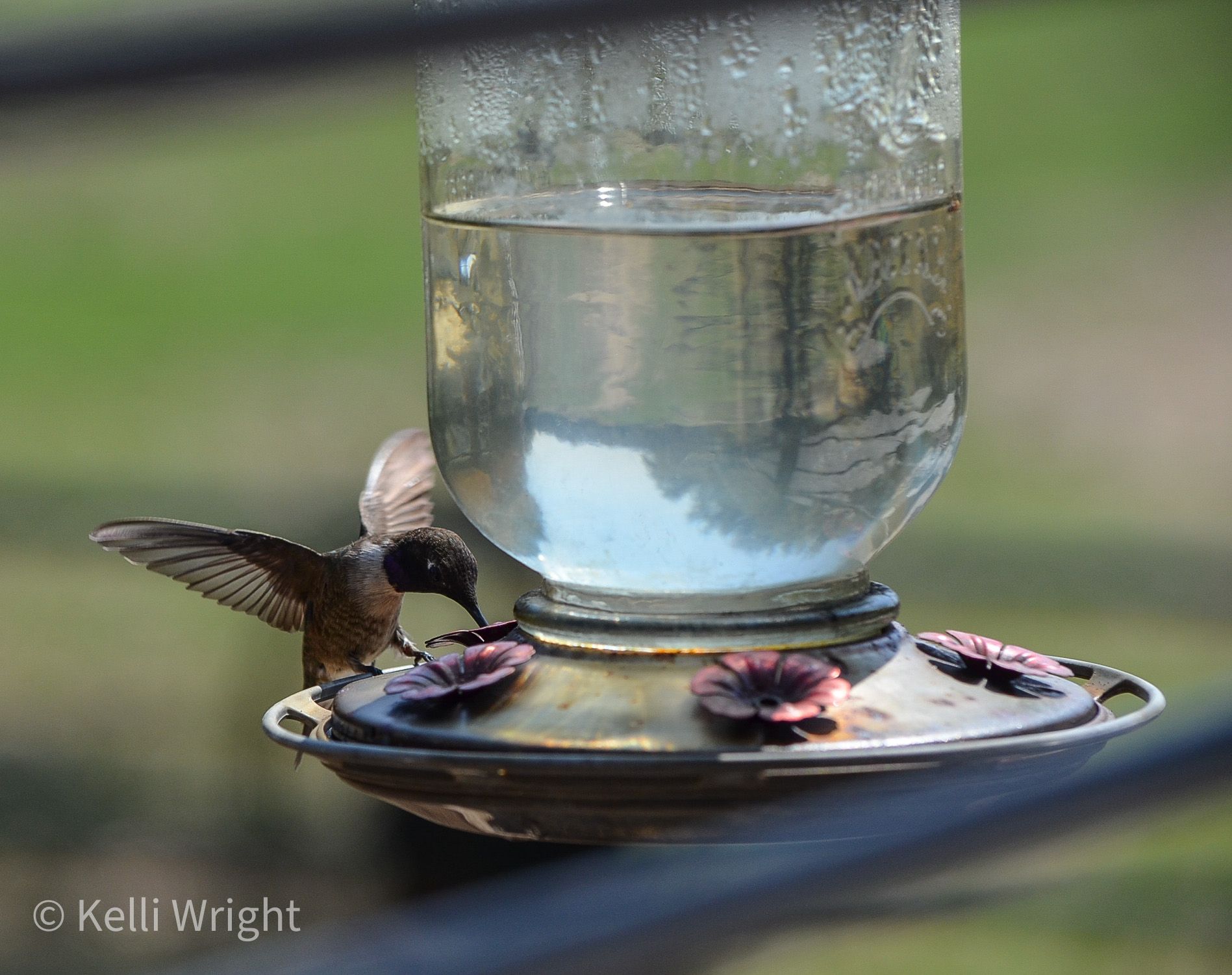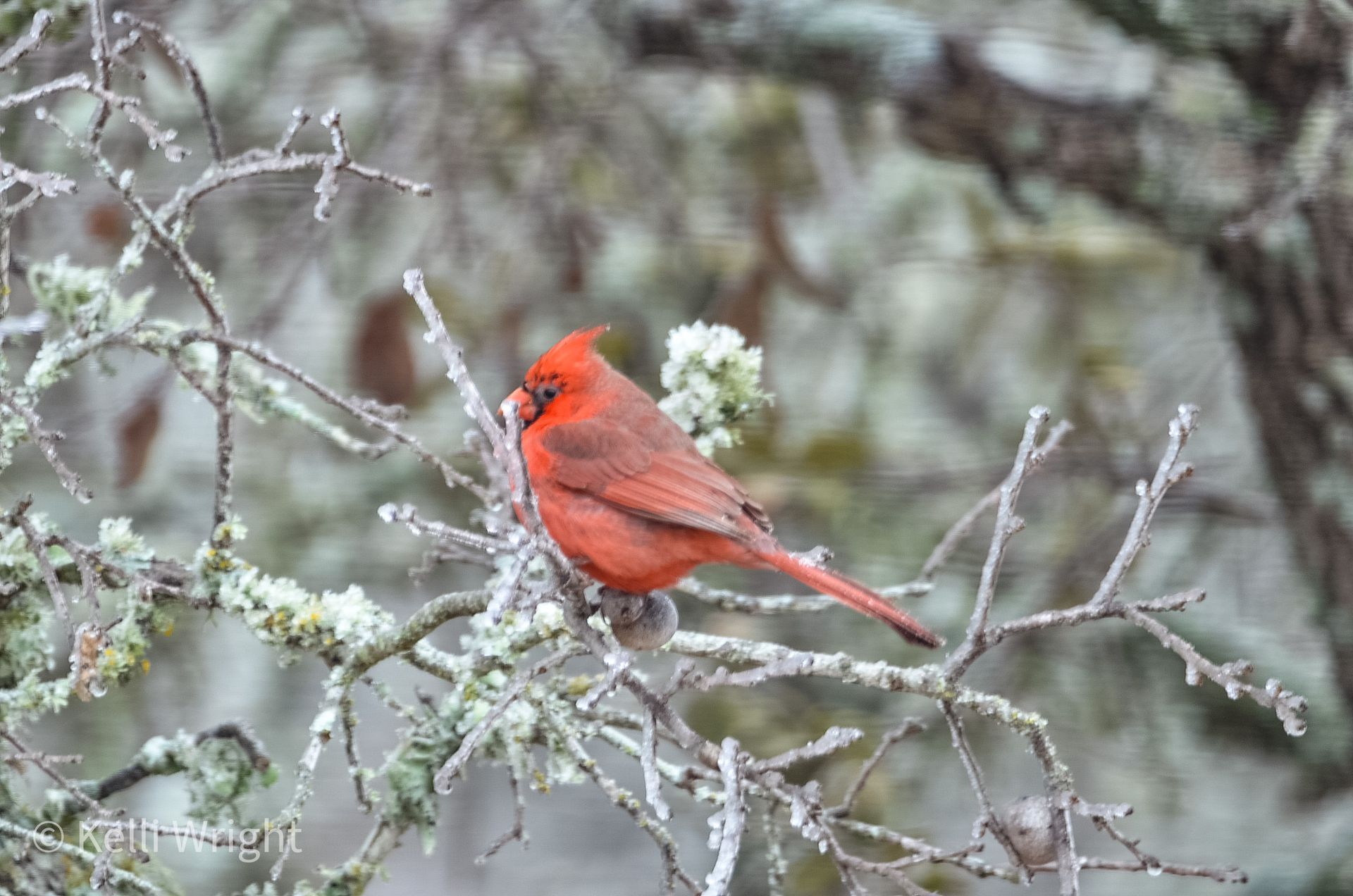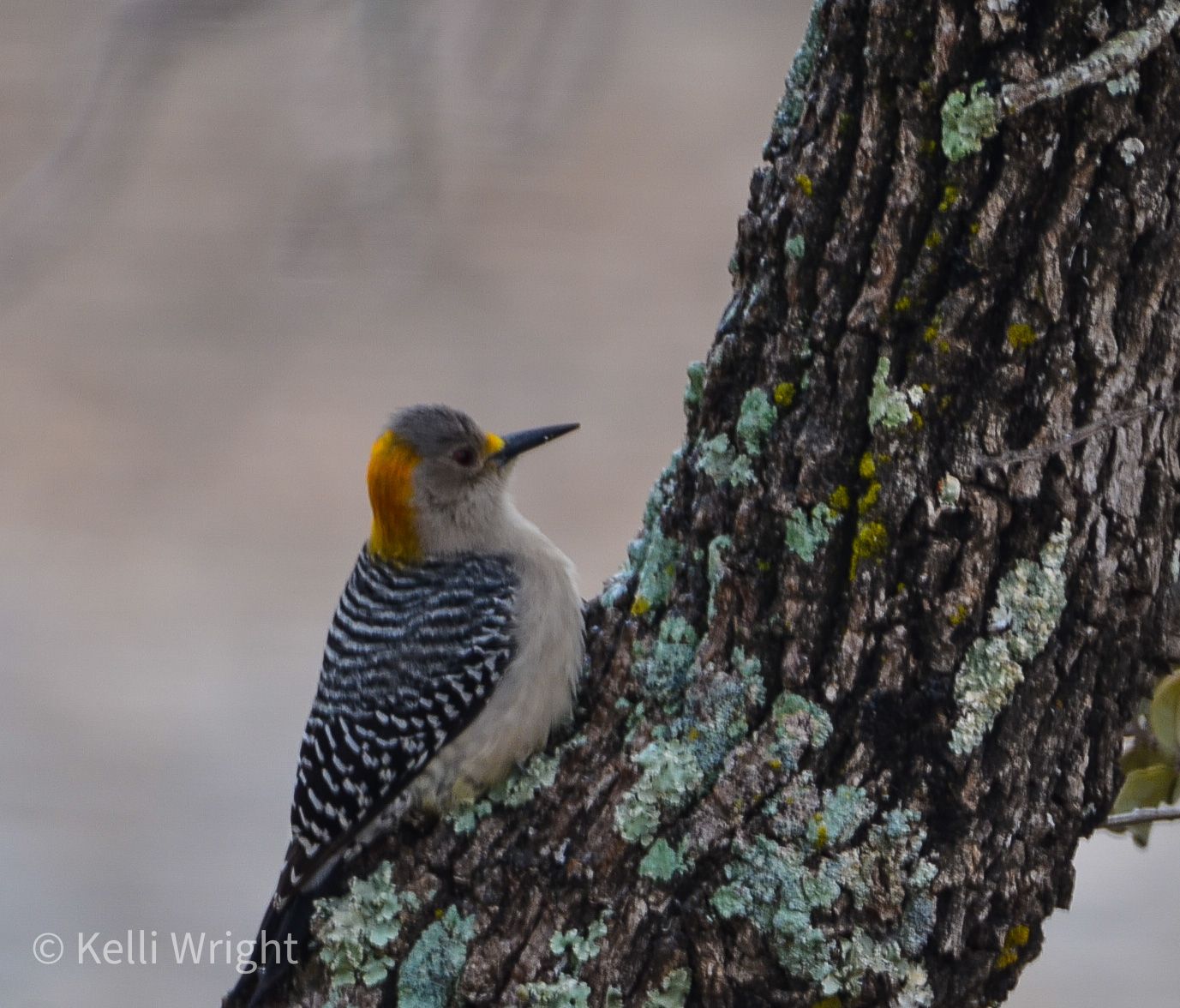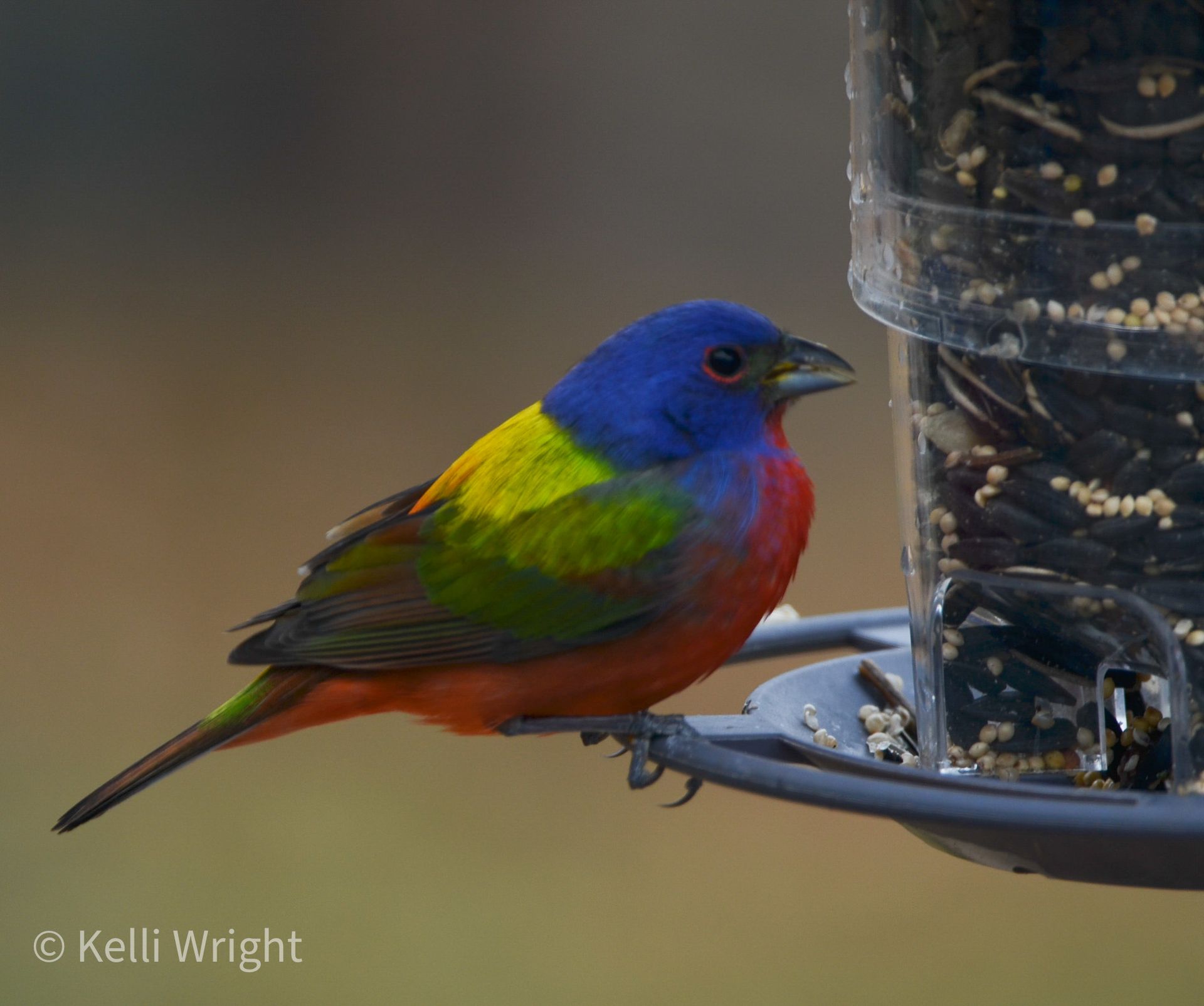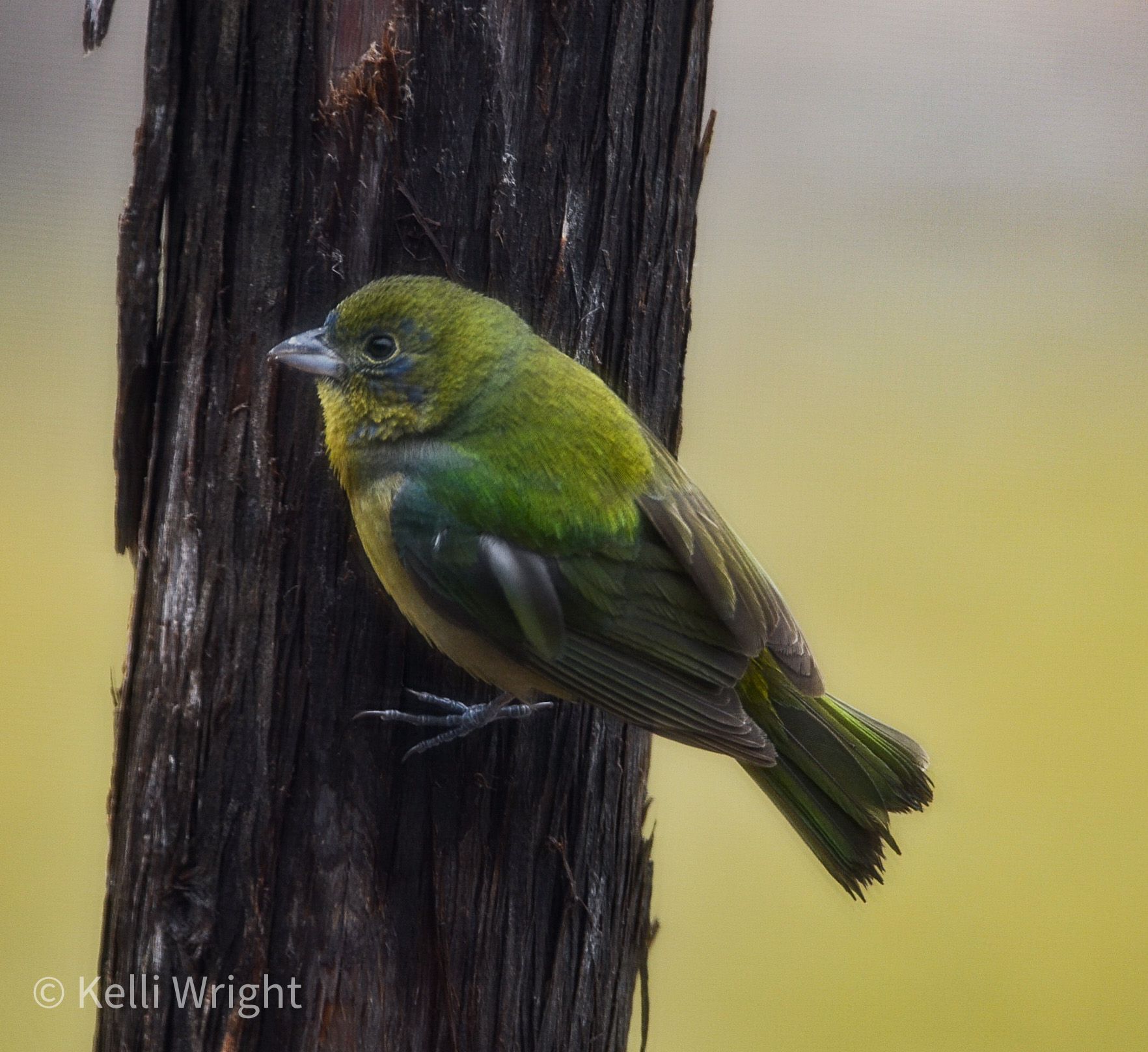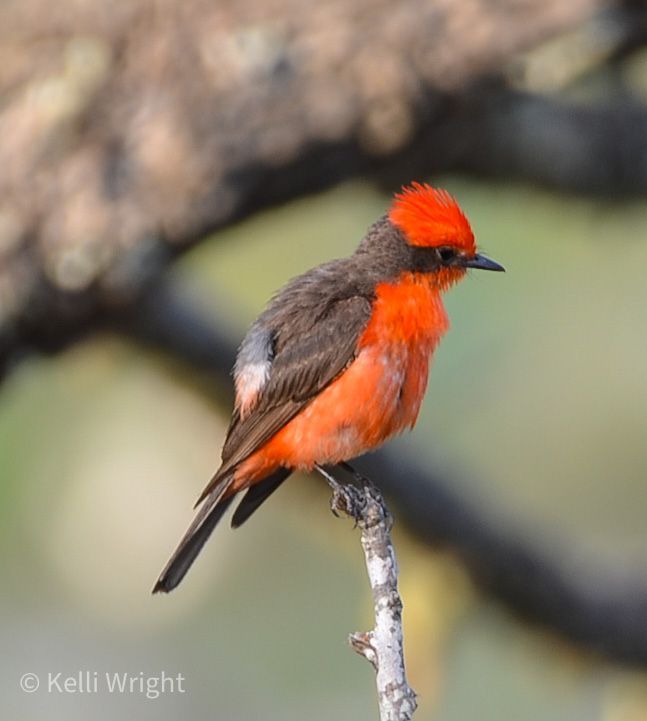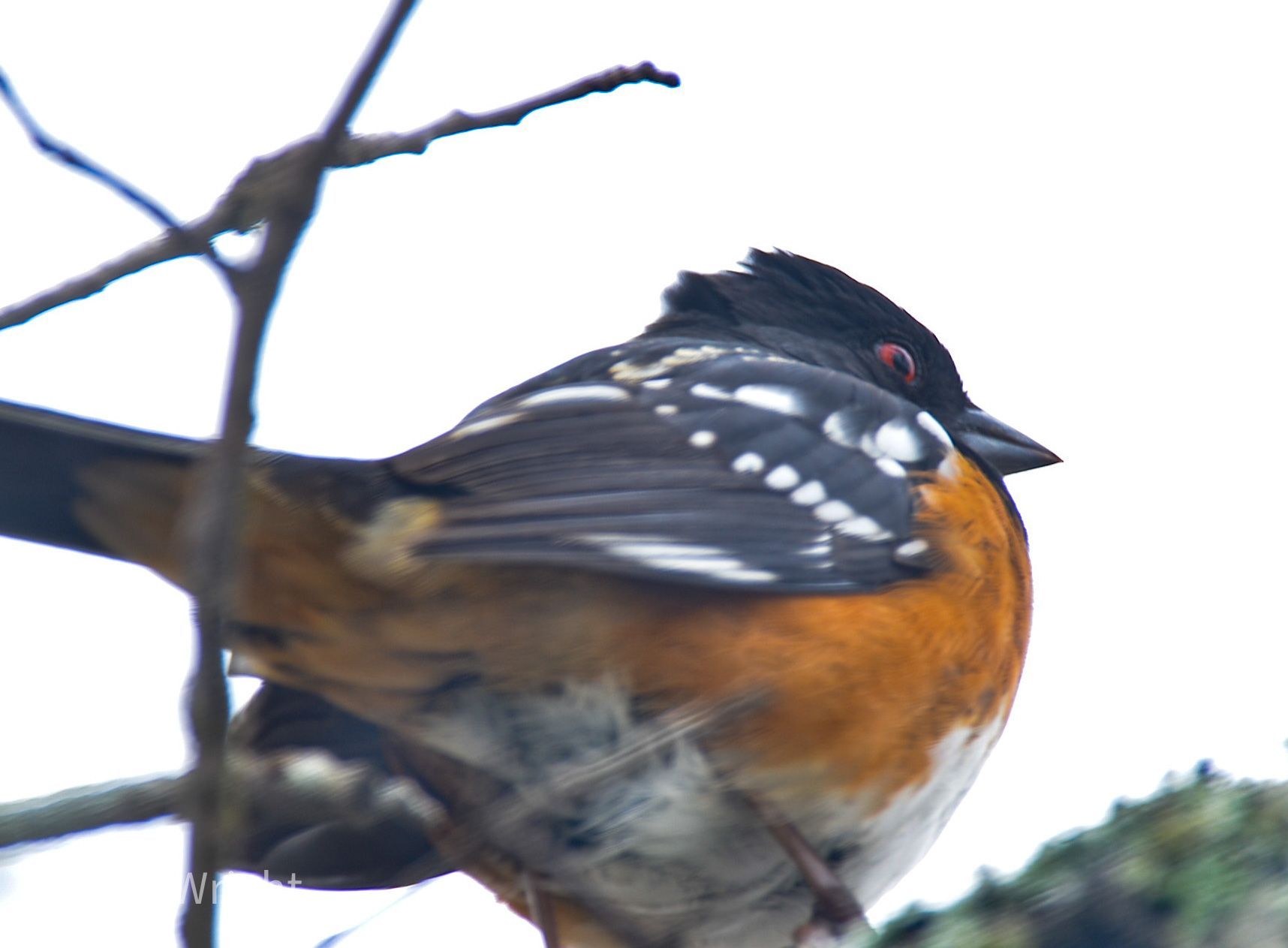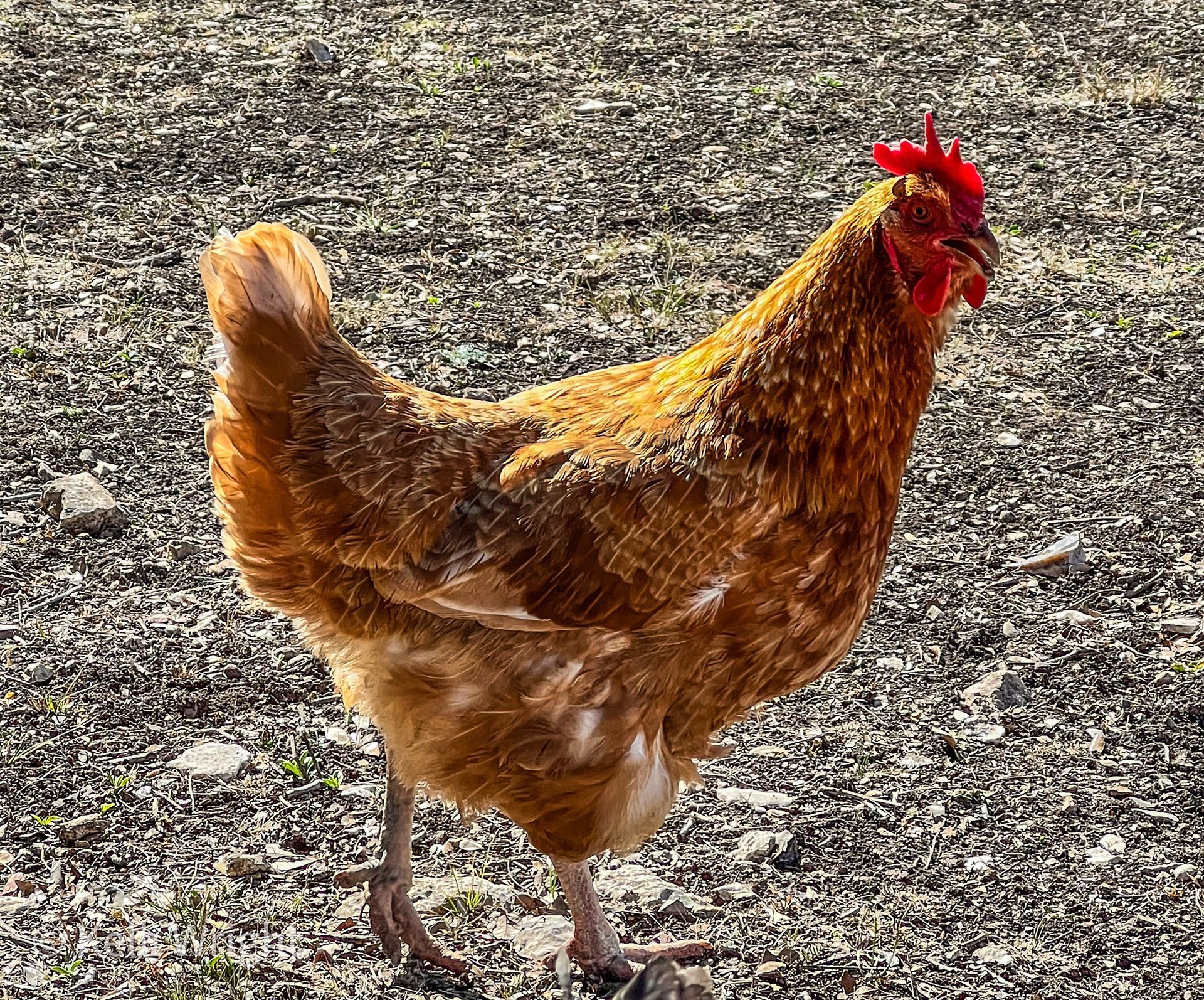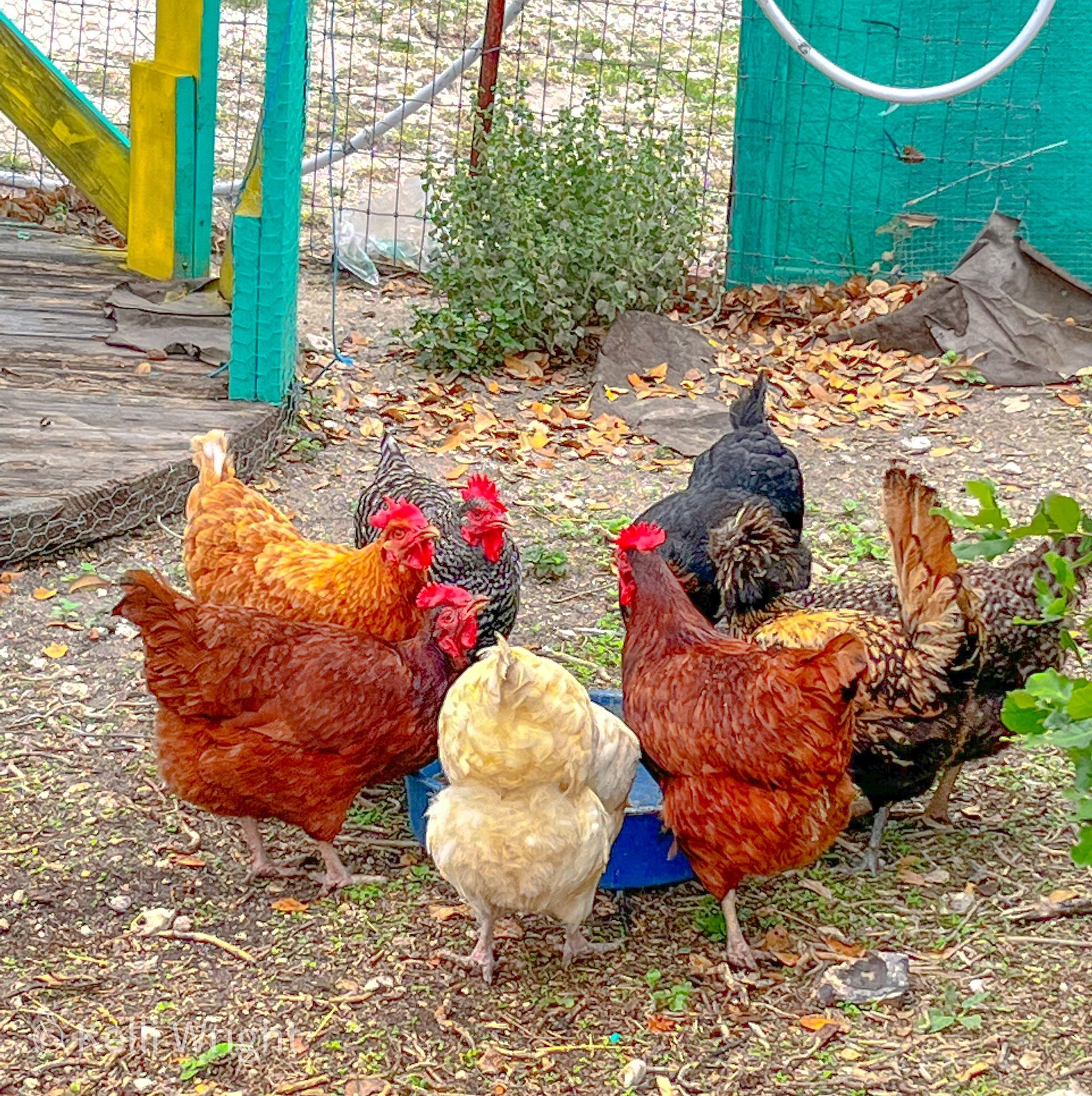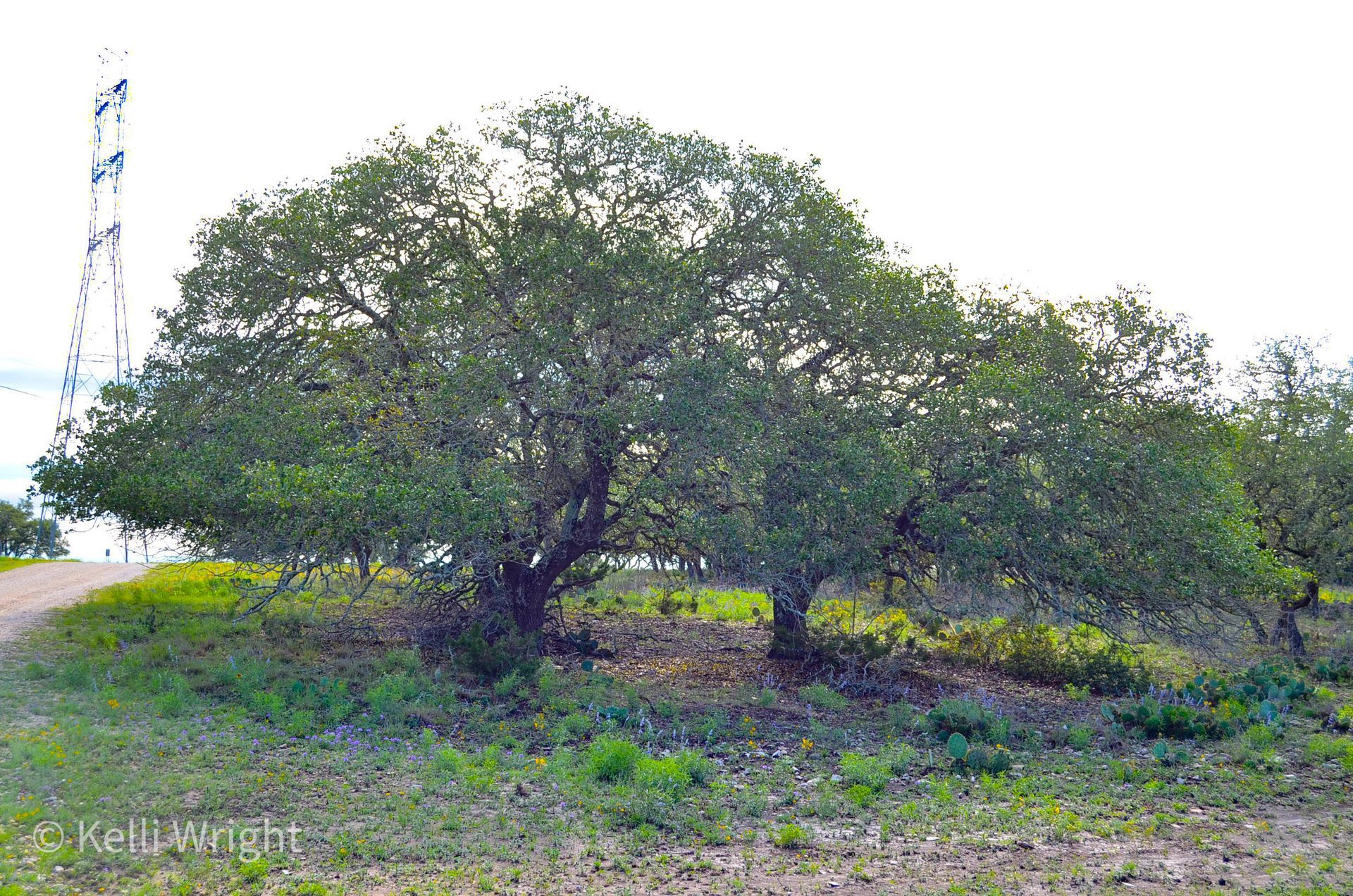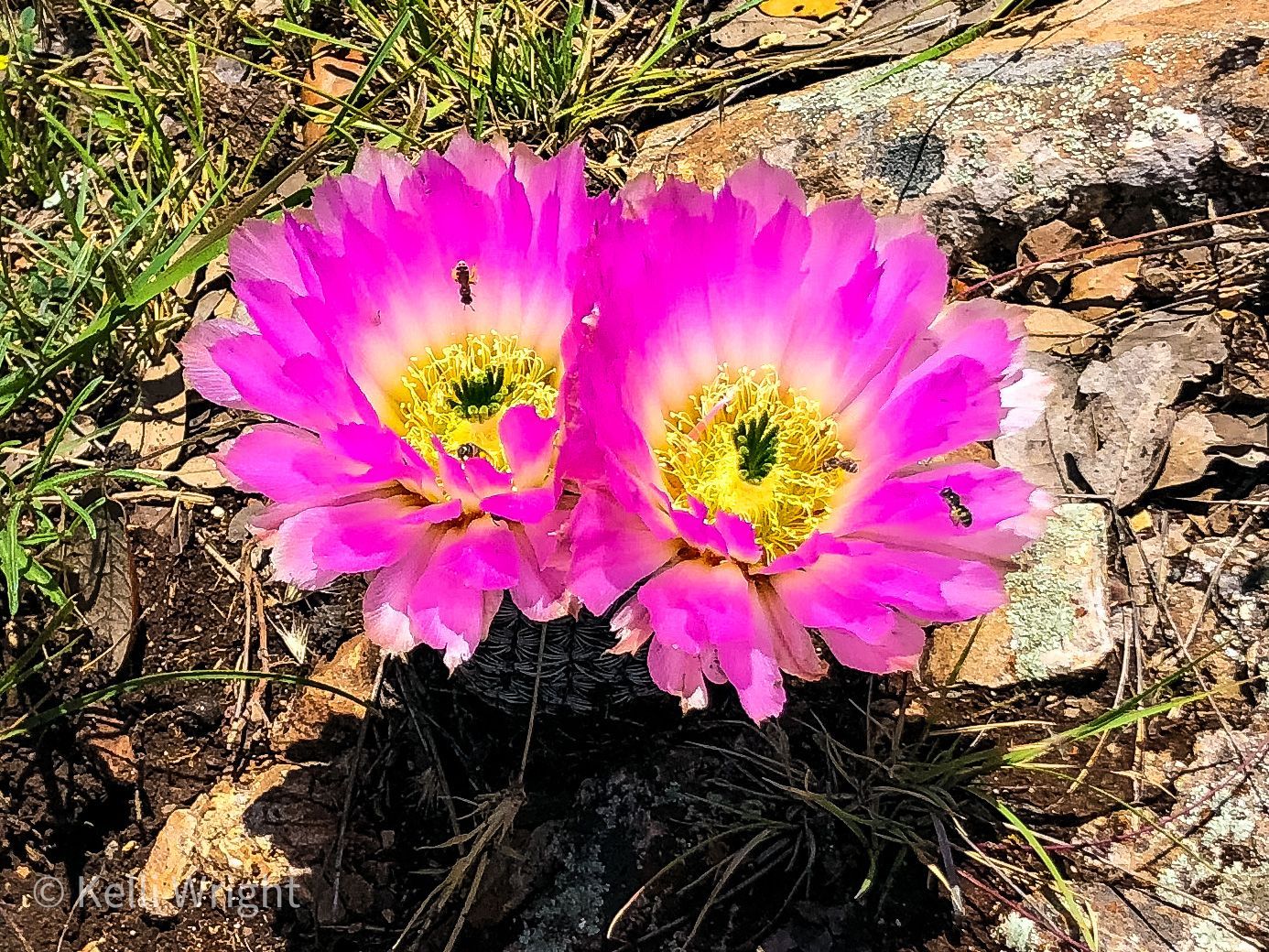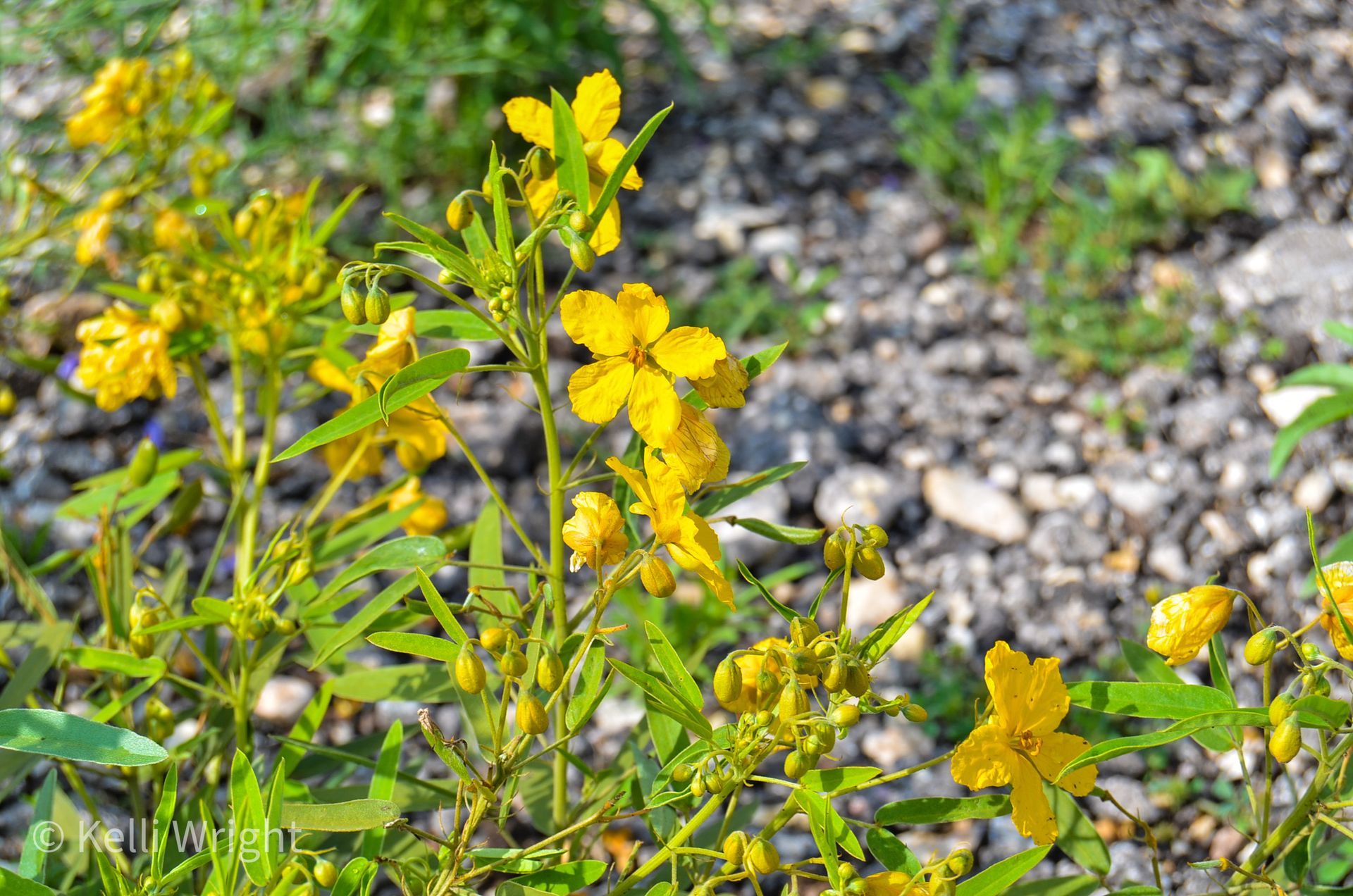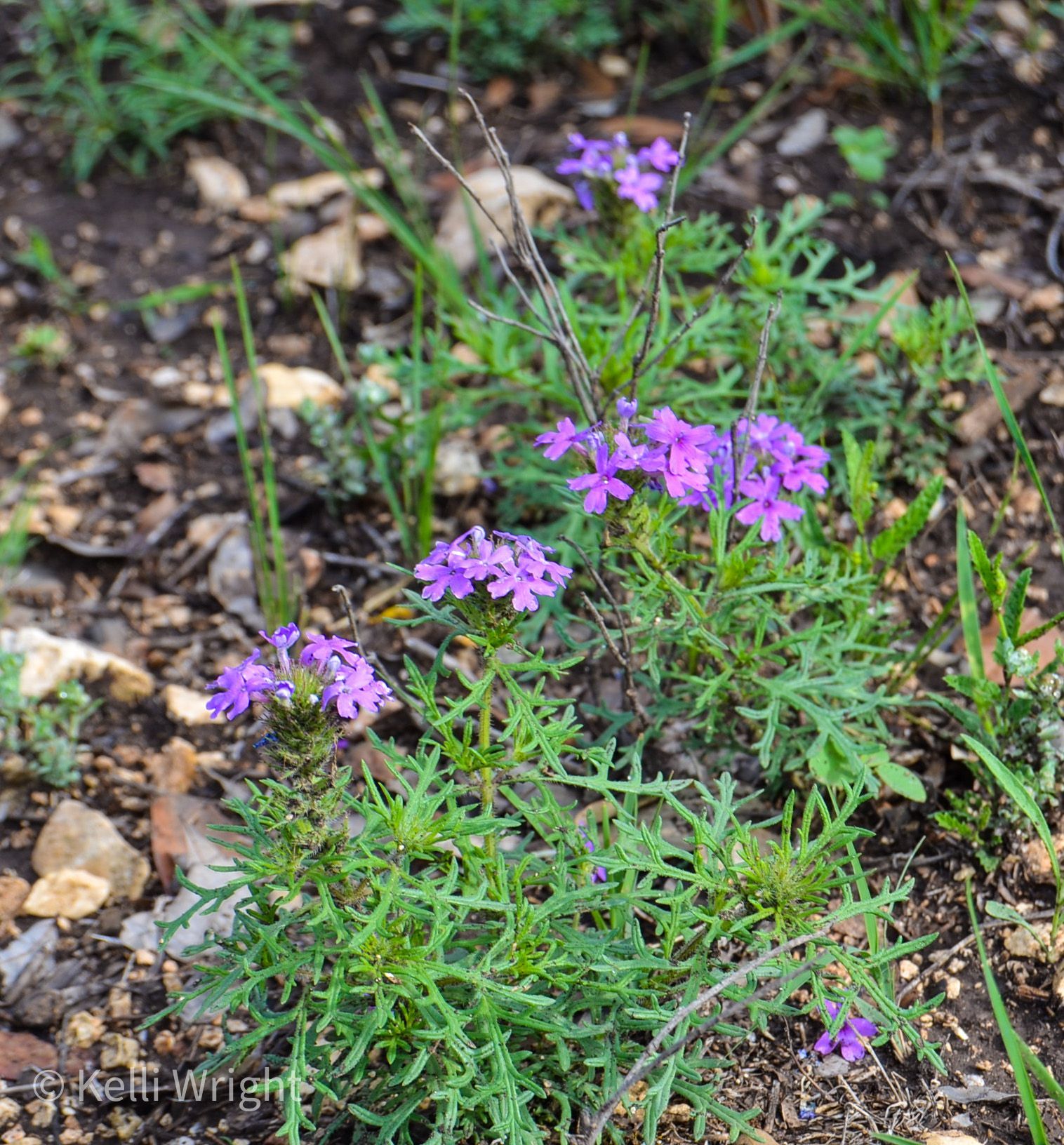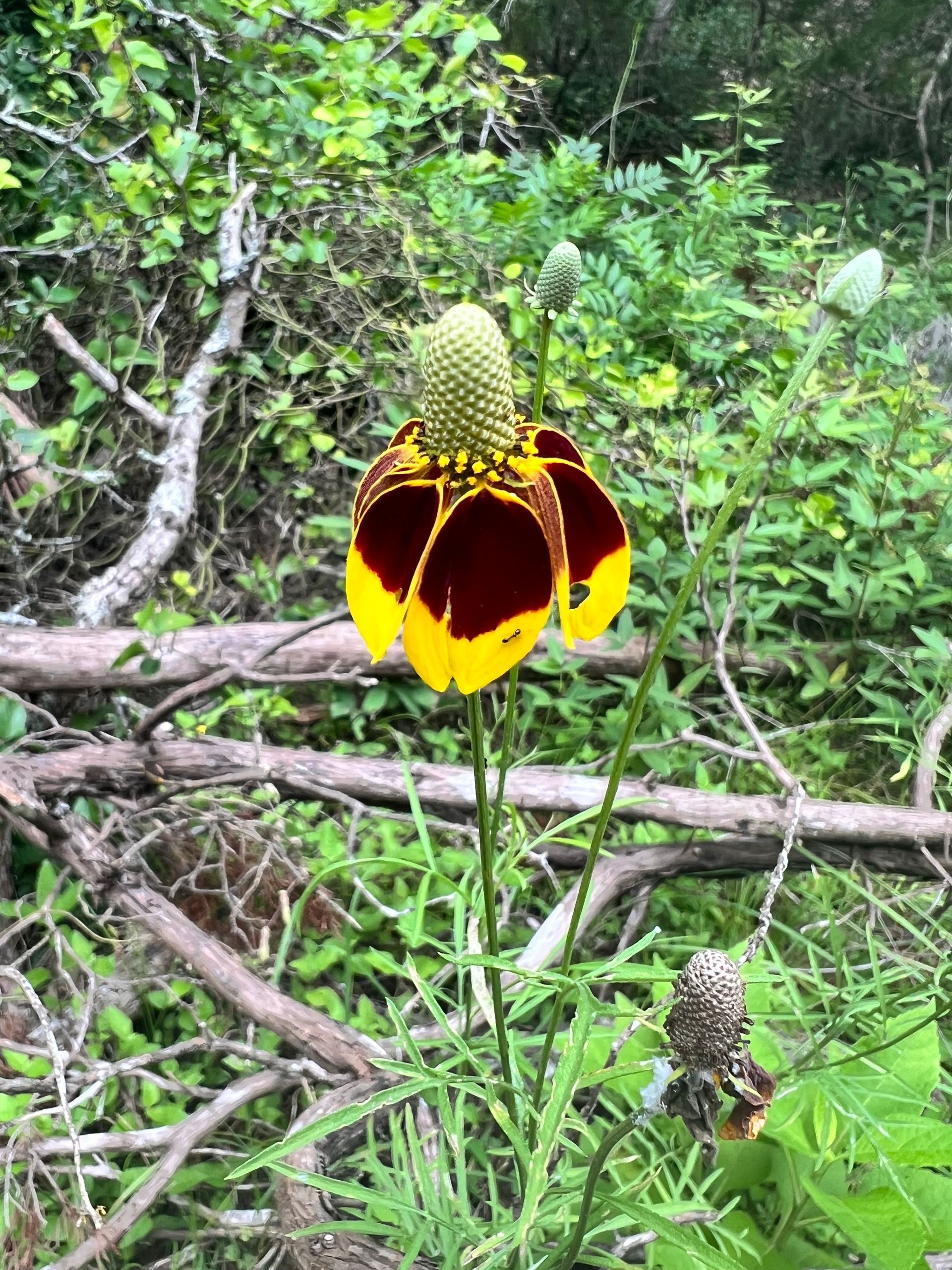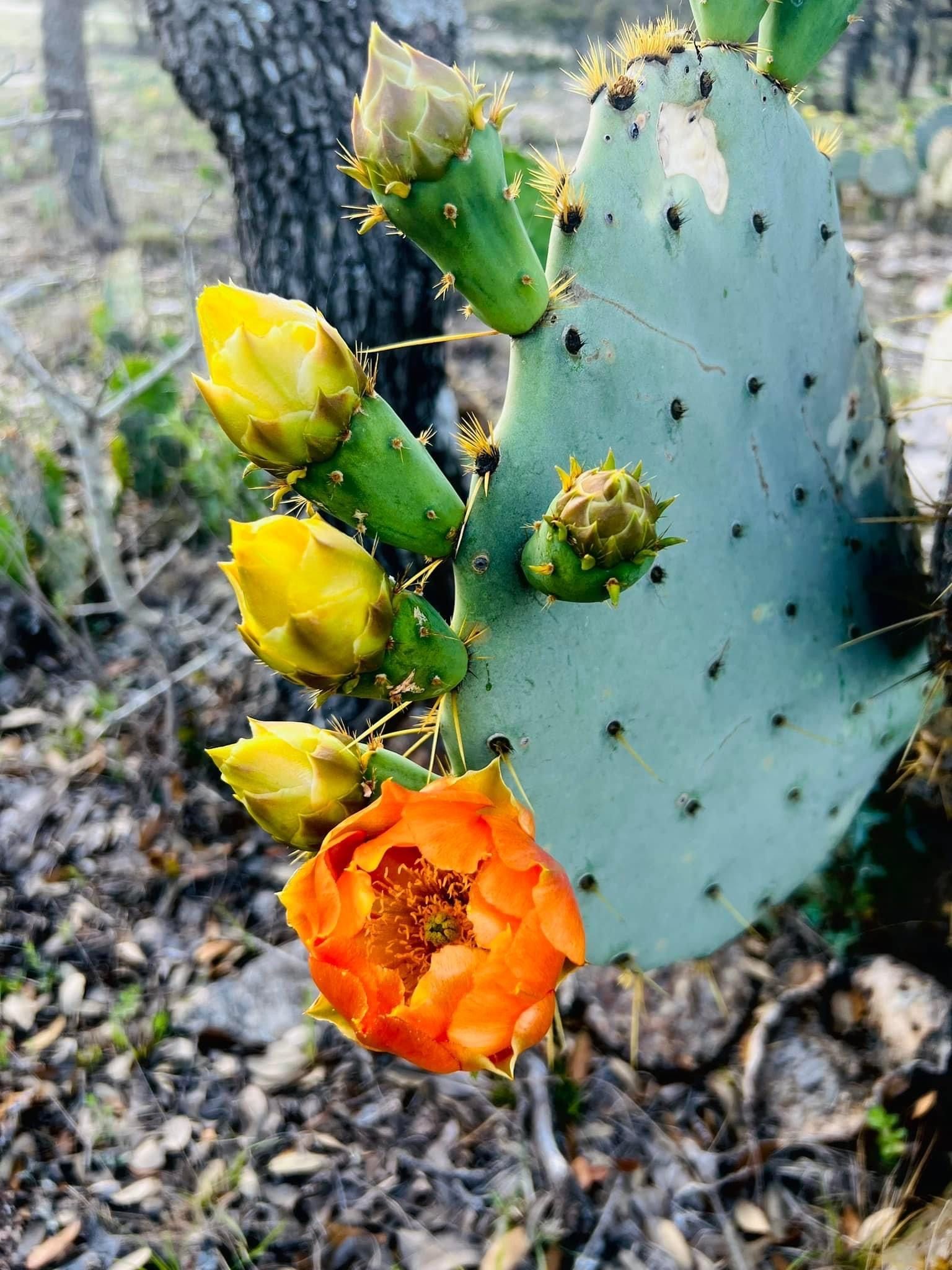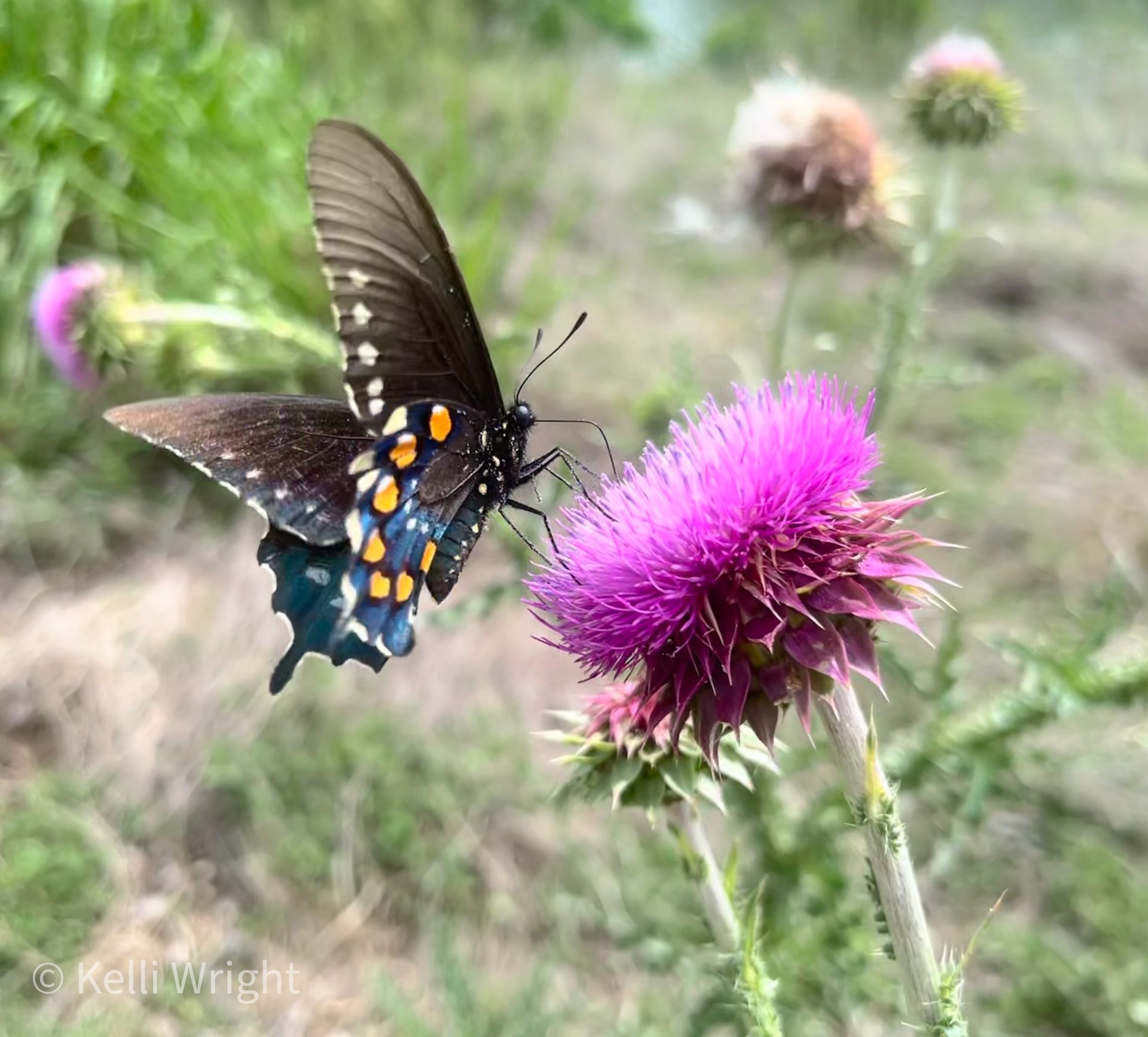Walk on the Wild Side
What deer can you see here?
We have four different breeds of deer/antelope that you can view at Cowboys and Angels Retreat. We have Blackbuck, which are not deer at all but actually a breed of Antelope. Blackbuck males have long twisted horns that grow throughout their life. The Males are tan with white underbelly just the the females, but will turn black during breeding season. We also have Fallow Deer that are native to Finland. Fallow deer are larger than native species and can be spotted, albino or brown - chocolate in color. Male Fallow deer grow large horns each season with wide "palms" between the tips. You may also see Axis or Chital deer that are native to the Indian sub-continent. Axis males and females retain their spotted coats into adulthood. Axis males grow very long curved horns each season and will "bark" during mating or to signal danger. Texas Whitetail deer are native to the area. They tend to be smaller than other exotic species, but have beautiful faces and graceful gait. Males drop old horns to grow new horns each season.
https://a-z-animals.com/blog/deer-in-texas-types-populations-and-where-they-live/
Birds you might glimpse...
We have numerous bird species that visit our wooded ranch. You will see Northern Cardinals - males are brilliant red and females are brown with a short red crest. You will also see families of House Finch - small birds that nest high in the trees and forage in the brush. House Finch are brown birds but the males have a rosy face and upper breast. You might see a Golden Fronted Woodpecker - they are black and white spotted birds with a yellow nape, and the males also have a red crown above the nape. If you are patient you might see one of our brilliantly colored Painted Buntings - females are bright green and the males are blue, yellow, green with a bright red breast. There are also pairs of Vermillion Flycatchers - small birds with short tails; males are bright orange/red color and females are gray brown with salmon underbelly. Click the link below to learn more about the beautiful birds you can view.
Keep an eye out above and below!
Our property is covered in Live Oak trees. Texas Live Oak trees grow to 50 feet in height with stout trunks. These trees can even have multiple trunks - and a dense crown that spreads up to 100 feet often touching the ground. Cedar trees can be found, but are invasive and steal ground water so most are removed for conservation efforts. Under the trees you might just find one of our chickens scratching or "dusting" - their way of bathing. We have several different breeds including Wyandotte, Barred Rock, Rhode Island Red, Brown, Buff Orphington, Leghorn and Austrolorpe. The "Fat Girls" are not agressive but can be heard talking to each other across the ranch.
What about the flora?
We have left the property natural to conserve and support the natural habitats of our birds and animals, so the flowers you might see on the property will vary with the season and the rainfall each year. Due to the rocky soil, we do not have many of the more commonly know varieties of Texas Wildflowers, but what we do have we have in abundance. Our open spaces are covered in Purple Sage and Englemann Daisies creating a sea of color along the road. If you take the walking trail you might find Mexican Hats dotted along the way and the Prairie Verbena packed tightly against the rocks. Our property is also home to numerous Prickly Pear Cactus which can bloom in a variety of colors and shades.
https://www.wildflower.org/texas-top-20

